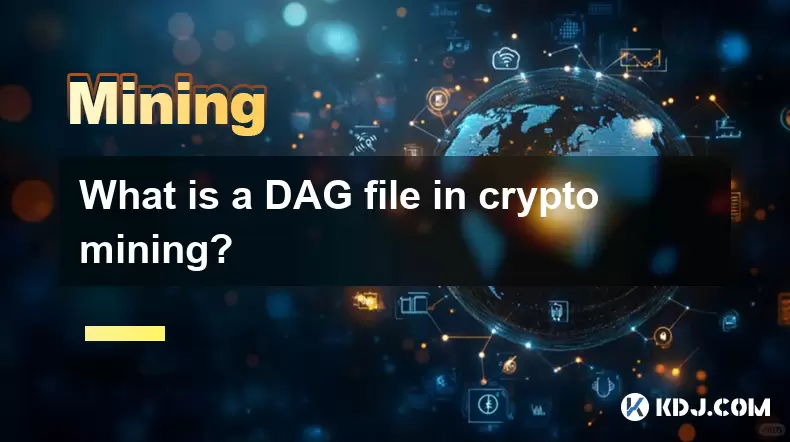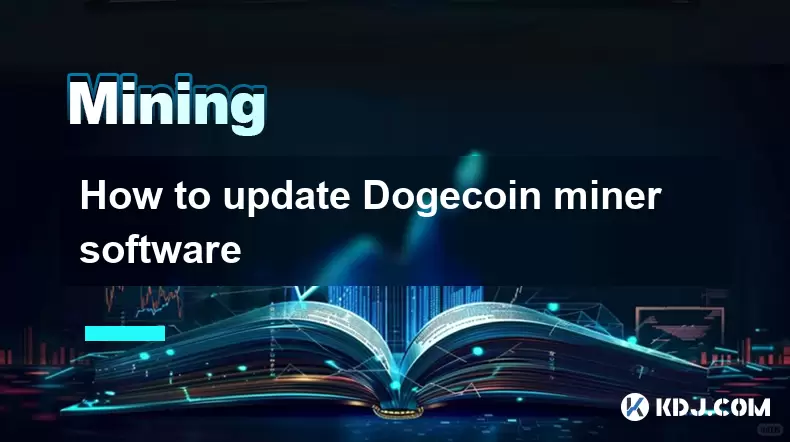-
 Bitcoin
Bitcoin $117,576.6195
-0.21% -
 Ethereum
Ethereum $2,938.5668
-1.35% -
 XRP
XRP $2.7699
4.60% -
 Tether USDt
Tether USDt $1.0003
0.01% -
 BNB
BNB $688.1624
-0.01% -
 Solana
Solana $160.5113
-1.95% -
 USDC
USDC $0.9999
0.01% -
 Dogecoin
Dogecoin $0.1976
-0.70% -
 TRON
TRON $0.3008
1.54% -
 Cardano
Cardano $0.7159
-2.16% -
 Hyperliquid
Hyperliquid $46.2240
2.04% -
 Stellar
Stellar $0.3966
22.03% -
 Sui
Sui $3.3928
-3.11% -
 Chainlink
Chainlink $15.1204
-2.43% -
 Bitcoin Cash
Bitcoin Cash $515.1741
-1.19% -
 Avalanche
Avalanche $20.8130
-0.90% -
 Hedera
Hedera $0.2001
-2.12% -
 UNUS SED LEO
UNUS SED LEO $9.0522
0.72% -
 Shiba Inu
Shiba Inu $0.0...01316
-2.01% -
 Toncoin
Toncoin $2.9843
0.61% -
 Litecoin
Litecoin $92.6745
-2.71% -
 Polkadot
Polkadot $3.9483
-0.06% -
 Monero
Monero $328.5347
1.10% -
 Dai
Dai $0.9998
0.01% -
 Ethena USDe
Ethena USDe $1.0006
-0.01% -
 Uniswap
Uniswap $8.3739
-6.50% -
 Bitget Token
Bitget Token $4.4241
-1.99% -
 Pepe
Pepe $0.0...01222
-3.96% -
 Aave
Aave $300.5203
-3.61% -
 Bittensor
Bittensor $382.2607
-1.92%
What is a DAG file in crypto mining?
The DAG file, essential for Ethereum mining, grows with the blockchain, requiring miners to update GPU memory regularly to maintain efficiency and avoid rejected shares.
Jul 12, 2025 at 04:29 am

Understanding the DAG File in Cryptocurrency Mining
In the world of cryptocurrency mining, particularly with Ethereum-based networks and other proof-of-work (PoW) blockchains, the term DAG file frequently appears. The acronym DAG stands for Directed Acyclic Graph, and it plays a crucial role in how certain cryptocurrencies are mined efficiently and securely.
The DAG file is not just a technical jargon; it's a foundational component that miners interact with during the hashing process. It's a large dataset generated algorithmically and used by mining algorithms such as Ethash, which powers Ethereum and many of its forks. This dataset is updated at regular intervals called epochs, typically every 30,000 blocks.
What makes the DAG file unique is that it must be regenerated approximately every few days to accommodate new blocks being added to the blockchain.
The Role of DAG in Ethash Algorithm
The Ethash algorithm relies heavily on the DAG file to perform mining operations. Miners use this dataset to compute hashes that validate transactions and create new blocks. Because of its size—often exceeding several gigabytes—the DAG file ensures that mining remains memory-hard, discouraging the development of ASICs (Application-Specific Integrated Circuits) designed specifically for mining.
Miners load the current DAG file into their GPU memory (VRAM) because accessing data from RAM or SSDs would significantly slow down the mining process. This requirement means that miners need GPUs with sufficient VRAM to hold the entire DAG file for the current epoch.
- Each epoch corresponds to a different DAG file version.
- Miners must download or generate the new DAG file when a new epoch begins.
- Failure to update the DAG can result in rejected shares or mining invalid blocks.
How Is the DAG File Generated?
The generation of a DAG file follows a deterministic process based on the block height and seed hash of the blockchain. Here’s a simplified breakdown:
- First, the seed hash for the current epoch is computed using the SHA3 algorithm.
- Then, a cache is generated from this seed hash.
- Using this cache, the full DAG dataset is created through a pseudo-random function.
- Each element in the DAG depends on previous elements, ensuring that the entire dataset must be stored for efficient access during mining.
This method prevents shortcuts in generating or verifying the DAG, reinforcing the memory-hard nature of Ethash and similar algorithms.
The DAG generation process requires significant computational resources but only needs to be done once per epoch.
DAG File Size and Its Impact on Hardware Requirements
As time progresses and more blocks are added to the blockchain, the size of the DAG file increases. This growth directly affects the minimum VRAM requirements for mining equipment. For instance, Ethereum’s DAG file started around 1 GB in 2016 but has grown steadily over time, surpassing 5 GB in recent years.
Miners using graphics cards with insufficient VRAM will find themselves unable to mine effectively once the DAG exceeds their card’s capacity. This dynamic acts as a natural deterrent against centralization, as it pushes miners toward consumer-grade hardware rather than specialized mining rigs.
- A GPU with at least 4GB VRAM was sufficient in early epochs.
- Currently, most miners require GPUs with 6GB or more VRAM to remain competitive.
- Cards with less than required VRAM may experience crashes or low hashrates.
Managing Multiple DAG Files Across Devices
In setups where multiple GPUs are used for mining, each device must have access to the correct DAG file for its mining software to operate correctly. Mining software like Claymore’s Dual Miner, PhoenixMiner, or NiceHash usually handles DAG generation automatically, but issues can arise if:
- Not enough disk space exists to store the new DAG.
- The system fails to switch DAG files between epochs quickly.
- Drivers or mining software aren’t optimized for fast DAG switching.
Some miners configure their systems to pre-generate the next DAG file before the epoch change to avoid downtime. This is especially useful for large-scale mining farms where even a few seconds of unproductive hashing can lead to missed rewards.
- Pre-generation tools like ethminer allow manual DAG creation ahead of an epoch switch.
- Proper configuration can prevent interruptions during DAG transitions.
- Monitoring tools can alert miners when upcoming DAG sizes exceed hardware capabilities.
Frequently Asked Questions
Q: Can I delete old DAG files after an epoch change?
Yes, older DAG files are no longer needed once the network moves to a new epoch. However, some mining software retains them to support fallback mechanisms or multi-chain mining scenarios.
Q: How do I check the current DAG file size?
You can monitor the DAG file size using mining software dashboards or command-line tools like ethminer --show-dag-size. Some operating systems also allow checking the file directly in the DAG storage directory.
Q: Does the DAG file affect mining profitability?
Indirectly, yes. As the DAG grows, it limits the number of GPUs capable of mining efficiently. Older GPUs with lower VRAM become obsolete, increasing operational costs for miners who must upgrade hardware regularly.
Q: Are DAG files exclusive to Ethereum?
No, while Ethereum popularized DAG usage through Ethash, other PoW blockchains like Ethereum Classic (ETC), Musicoin, and Pirl also utilize DAG files in their consensus mechanisms.
Disclaimer:info@kdj.com
The information provided is not trading advice. kdj.com does not assume any responsibility for any investments made based on the information provided in this article. Cryptocurrencies are highly volatile and it is highly recommended that you invest with caution after thorough research!
If you believe that the content used on this website infringes your copyright, please contact us immediately (info@kdj.com) and we will delete it promptly.
- Binance, Bloomberg, and a Lawsuit Threat: CZ's Fighting Back!
- 2025-07-13 01:30:12
- Litecoin, BONK, BlockDAG Presale: Navigating the Crypto Frenzy
- 2025-07-13 00:30:12
- BDAG Leads Crypto Trends with $336M Presale: A New Era?
- 2025-07-13 01:30:12
- XRP and Ethereum Whales Stir as Crypto Market Eyes All-Time Highs
- 2025-07-13 02:10:12
- MicroStrategy, Bitcoin, and the Leveraged Proxy: Riding the Crypto Wave
- 2025-07-13 00:50:12
- Trump, Binance, and Crypto Aid: A Tangled Web of Allegations
- 2025-07-13 02:10:12
Related knowledge

How to keep a mining rig cool
Jul 12,2025 at 01:42pm
Understanding the Importance of Cooling in Mining RigsCryptocurrency mining is an intensive process that places heavy demand on hardware components, p...

How much does it cost to start crypto mining?
Jul 13,2025 at 12:22am
Understanding the Basic Costs of Crypto MiningStarting crypto mining involves several upfront and ongoing expenses. The primary costs include hardware...

What do I need to start mining crypto?
Jul 13,2025 at 12:28am
Understanding the Basics of Crypto MiningCrypto mining is the process by which transactions are verified and added to a blockchain, and new coins are ...

How to find the best Dogecoin mining pool for me
Jul 12,2025 at 04:14pm
Understanding the Role of a Mining PoolWhen mining Dogecoin, joining a mining pool can significantly increase your chances of earning consistent rewar...

How to update Dogecoin miner software
Jul 12,2025 at 12:36pm
Understanding Dogecoin Mining and the Need for Software UpdatesDogecoin mining involves using specialized software to validate transactions on the Dog...

Overclocking settings for Dogecoin mining
Jul 12,2025 at 12:57pm
Understanding Overclocking in Dogecoin MiningOverclocking refers to the process of increasing the clock rate of a component—typically a GPU or CPU—bey...

How to keep a mining rig cool
Jul 12,2025 at 01:42pm
Understanding the Importance of Cooling in Mining RigsCryptocurrency mining is an intensive process that places heavy demand on hardware components, p...

How much does it cost to start crypto mining?
Jul 13,2025 at 12:22am
Understanding the Basic Costs of Crypto MiningStarting crypto mining involves several upfront and ongoing expenses. The primary costs include hardware...

What do I need to start mining crypto?
Jul 13,2025 at 12:28am
Understanding the Basics of Crypto MiningCrypto mining is the process by which transactions are verified and added to a blockchain, and new coins are ...

How to find the best Dogecoin mining pool for me
Jul 12,2025 at 04:14pm
Understanding the Role of a Mining PoolWhen mining Dogecoin, joining a mining pool can significantly increase your chances of earning consistent rewar...

How to update Dogecoin miner software
Jul 12,2025 at 12:36pm
Understanding Dogecoin Mining and the Need for Software UpdatesDogecoin mining involves using specialized software to validate transactions on the Dog...

Overclocking settings for Dogecoin mining
Jul 12,2025 at 12:57pm
Understanding Overclocking in Dogecoin MiningOverclocking refers to the process of increasing the clock rate of a component—typically a GPU or CPU—bey...
See all articles

























































































